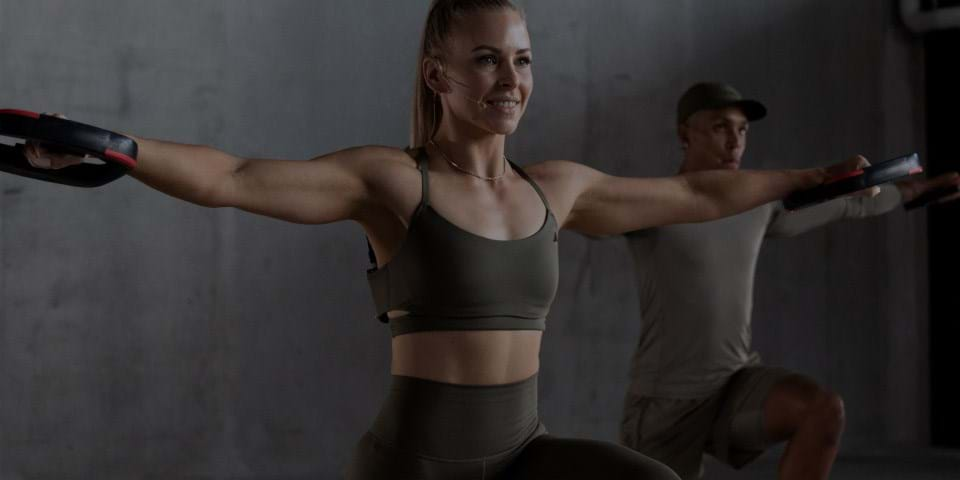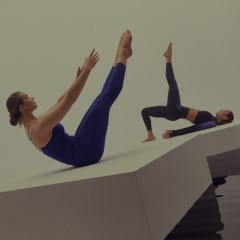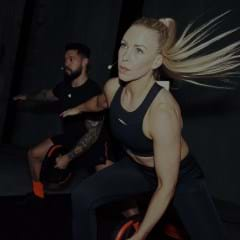Since learning how to stand upright on our own at a tender young age, most of us have been stepping forward without so much as a backward glance. But stepping forward isn’t always the best way to get us where we want to be – particularly when it comes to lunges.
Like with any strength exercise, the lunge aims to maximize the load on the target muscles with minimal joint load. This allows us to get all the wonderful toning benefits while minimizing the chance of injury. So what’s the best approach?
Why forward-stepping lunges can be problematic
While stepping forward into a lunge position can come most naturally, when you step forward and land your foot on the floor the knee joint has to provide a handbrake to the movement. This causes extra pressure, which goes directly into the back of the knee cap. Your quad muscles have to contract strongly to slow you down which also adds to this pressure because they are attached to the kneecap. The increase in compressive and impact forces in the front knee will often result in the front knee moving forward past the front ankle – increasing the amount of flexion and further increasing joint forces.
Why backward-stepping lunges can be better
Just like with a forward lunge, the front leg is still the target for a backward stepping lunge. The muscles do the same amount of work but without the joint pressure because the impact, and therefore the handbrake action, is removed. The back foot taps down lightly and returns to the front, keeping the load on the target muscles of the front leg.
After doing a series of tests, Professor Jinger Gottschall discovered that without any significant difference in muscle activation, the backward stepping lunge reduces the loads on the front knee by 50 percent.
Backward stepping lunges can also be safer for your lower back than forward lunges. This is because you’re more likely to maintain an upright posture, as the first action of the reverse lunge is a backward step, which makes it much easier to keep your trunk vertical.
In a nutshell… whether you step back or forward as you lunge, you'll likely generate the same muscle activation, but stepping backward makes it easier to eliminate joint issues and maintain good posture.
When forward stepping lunges can be a smart move
Variety is an important part of any exercise regime, so mixing up the way you move can be beneficial – and that's where forward-stepping lunges can come in.
When stepping forward, the use of a bench or step is important, as it forces us to actively step up. This means there is less deceleration than stepping forward to the floor and we don’t have any increased compressive and impact forces on the front knee, so any risk of injury is significantly reduced.
While most dynamic lunges you'll see in LES MILLS workouts will be backward stepping, in some cases, such as during BODYPUMP #125, we introduce forward-stepping lunges.
Transitioning from a forward to a backward-stepping lunge motion allows us to focus on the stationary leg. As we keep this knee bent and aligned with the middle toes, we focus on precision and control. This creates time under tension and ultimately results in stronger lower limb stabilizers.
Why we love lunges
Even if done with only your body weight, lunges do wonders for improving muscular strength and therefore toning your butt and thighs. Keeping your muscles well-conditioned with lunges can also decrease your risk of injury and enhance the overall functioning of your body during running, cycling, walking, hiking or any other activity that relies heavily on your lower body.
You can increase your strength gains by holding a dumbbell in each hand or a dumbbell in only one hand at a time to provide a greater challenge for your core. Use heavier weights for two to three sets of five to 10 reps for optimum strength improvement.
3 simple tweaks to lift your lunge game
With a few quick self-assessments and some smart tweaks, you can reap maximum rewards from your leg work.
Bryce Hastings is a leading New Zealand physiotherapist and fitness expert. As Les Mills Head of Research he leads research into the most effective approaches to exercise and plays a pivotal role in structuring all LES MILLS™ workouts. Bryce’s passion for effective exercise is born from spending 30 years in physiotherapy, where he saw “people getting their lives wrong” every day and felt like he was acting as an ambulance at the bottom of the cliff. By working in fitness he gets to be the fence at the top.









